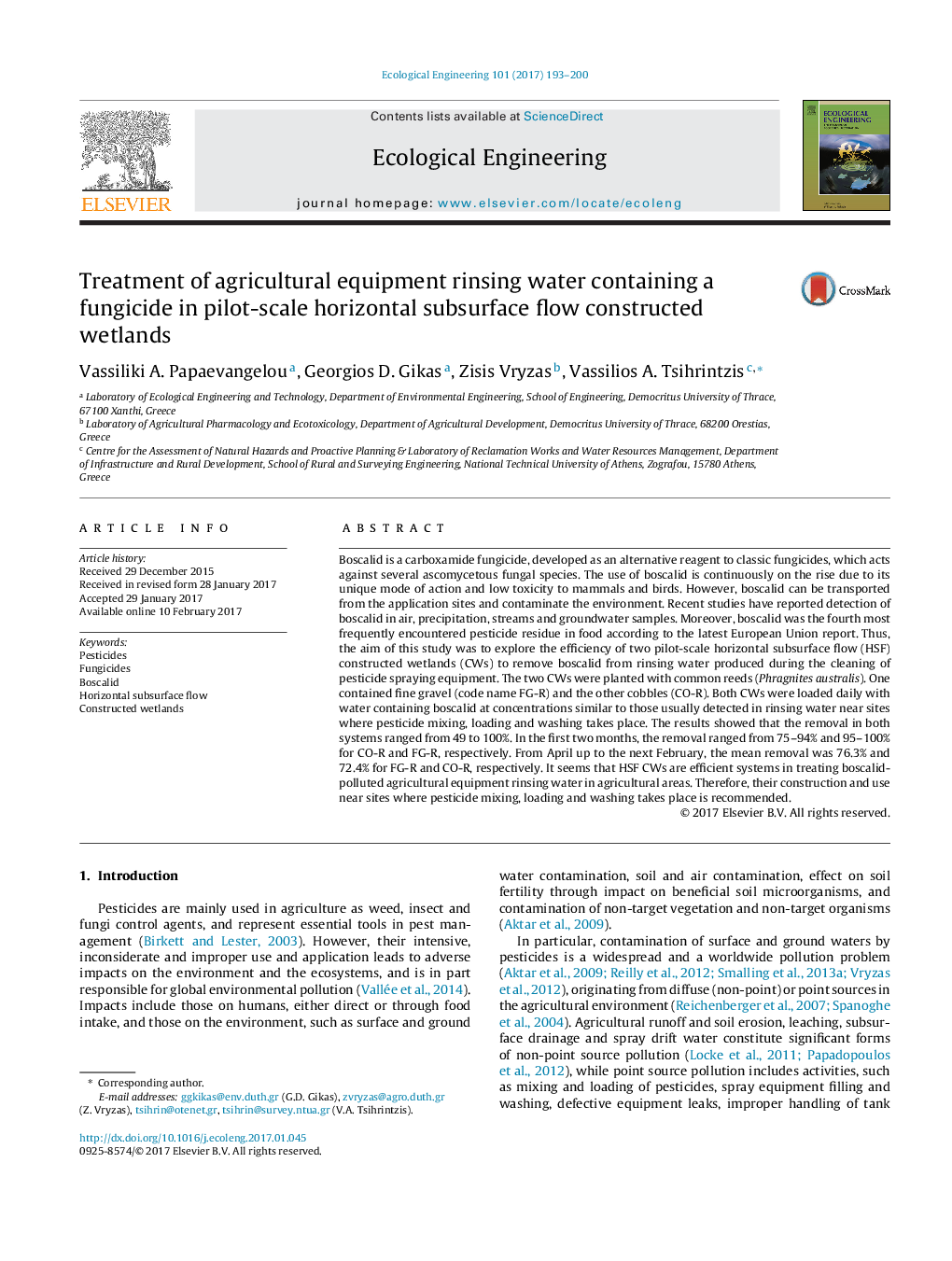| کد مقاله | کد نشریه | سال انتشار | مقاله انگلیسی | نسخه تمام متن |
|---|---|---|---|---|
| 5743929 | 1617998 | 2017 | 8 صفحه PDF | دانلود رایگان |
- Boscalid fungicide contamination of aquatic systems.
- Treatment of agricultural equipment rinsing water containing boscalid fungicide.
- Experimental study
- Removal of boscalid in pilot-scale HSF constructed wetlands.
- Effect of temperature, hydraulic residence time, organic matter content, substrate gradation.
Boscalid is a carboxamide fungicide, developed as an alternative reagent to classic fungicides, which acts against several ascomycetous fungal species. The use of boscalid is continuously on the rise due to its unique mode of action and low toxicity to mammals and birds. However, boscalid can be transported from the application sites and contaminate the environment. Recent studies have reported detection of boscalid in air, precipitation, streams and groundwater samples. Moreover, boscalid was the fourth most frequently encountered pesticide residue in food according to the latest European Union report. Thus, the aim of this study was to explore the efficiency of two pilot-scale horizontal subsurface flow (HSF) constructed wetlands (CWs) to remove boscalid from rinsing water produced during the cleaning of pesticide spraying equipment. The two CWs were planted with common reeds (Phragnites australis). One contained fine gravel (code name FG-R) and the other cobbles (CO-R). Both CWs were loaded daily with water containing boscalid at concentrations similar to those usually detected in rinsing water near sites where pesticide mixing, loading and washing takes place. The results showed that the removal in both systems ranged from 49 to 100%. In the first two months, the removal ranged from 75-94% and 95-100% for CO-R and FG-R, respectively. From April up to the next February, the mean removal was 76.3% and 72.4% for FG-R and CO-R, respectively. It seems that HSF CWs are efficient systems in treating boscalid-polluted agricultural equipment rinsing water in agricultural areas. Therefore, their construction and use near sites where pesticide mixing, loading and washing takes place is recommended.
143
Journal: Ecological Engineering - Volume 101, April 2017, Pages 193-200
